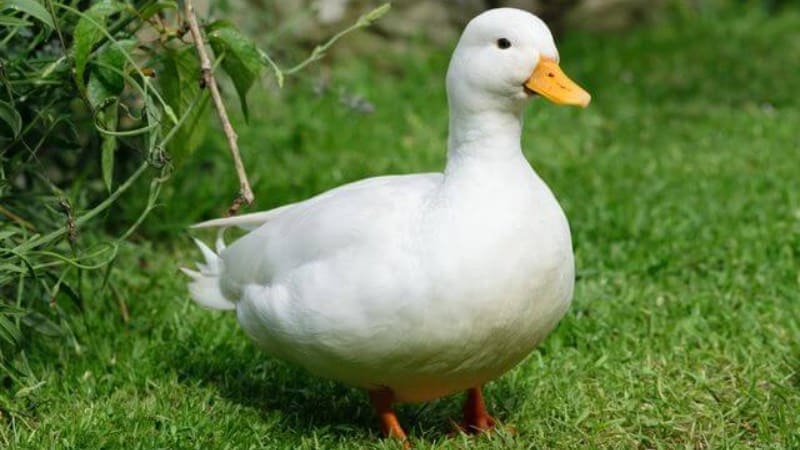Feather loss in ducks and geese is common in both home and farm environments. Factors contributing to the development of this disease often include stocking density, barn hygiene, and feed and water quality.
In livestock farming, geese are poultry species that bring high economic efficiency. However, geese also require special care, because they can face many risks and often susceptible to disease. In particular, loss of feathers in geese is quite common, not only affecting the development but also causing great economic loss. When it comes to feather loss in geese, most farmers will feel scared and discouraged. Therefore, people need to grasp this situation to know how to prevent and overcome it effectively.
I. CAUSE OF DISEASE
The time when ducks and geese most often lose their feathers is when they have full wing feathers and are ready to be sold. There are families where they shed their feathers all over their cages. Whenever we touch them, their feathers fall out immediately. The main causes of feather loss in ducks and geese are:

- Because the nutrition in the diet is not guaranteed
– Unbalanced feed rations for ducks and geese: lack of protein or excess fat, etc.
– Deficiency of macronutrients and microelements necessary for geese and ducks during the period of feather growth and skeletal development such as: Calcium, phosphorus, iron, sulfur, manganese, iodine, ADE, etc.
- Medical condition
– Ducks and geese suffer from diseases: cholera, hepatitis, hemorrhagic fever, short beak, etc. if not treated completely, long-term treatment results in E. coli causing diarrhea. They stop eating, imbalance in nutritional composition, leading to feather loss.
– During treatment: Using antibiotics for the wrong disease, overdosing on antibiotics, using for a long time.
- Cage conditions
– Unventilated barns, high humidity, polluted barns.
– Raising density is too tight, causing geese and ducks to often be stressed.
- Due to weather changes and seasons
Physiological feather loss: With ducks and geese raised for laying, there is feather loss before and after the laying cycle.

II. HOW TO REMEDY FEATHER LOSS ON DUCKS & GEESE
To overcome feather loss on ducks and geese, farmers should: Separate one showing signs of feather loss from the flock, and monitor, determine the cause, and intervene.
- Nurturing care
– Feed must be appropriate to age needs. Provide enough quantity according to dietary needs. Feed should be chosen from reputable factories.
– Immediately and continuously supplement vitamins and trace minerals for the entire herd such as: CALCIMIN ORAL or CANCIBONE or CANPHOLIS.
HASPRO or FIZYMLUS probiotics helps balance beneficial intestinal microflora, helping them absorb feed better, minimizing gastrointestinal diseases.

- Ensure the livestock environment
Regularly clean and disinfect the cage with DEXON DUPER or IONDIN @. Ensure reasonable farming density.
- Remedy the condition
Correctly identify the disease, intervene promptly and accurately.
During antibiotic treatment: Choose the right type, use the right dose, and follow the correct course of treatment according to instructions.
The phenomenon of feather loss in ducks and geese is popular and is you know the causes and how to overcome this phenomenon, animals can healthy and bring high-economic efficiency.
Please watch our practical video on pet health care on our YouTube channel: [Dr. Vet Global](https://www.youtube.com/results?search_query=dr+vet+global). Thank you for your interest!
